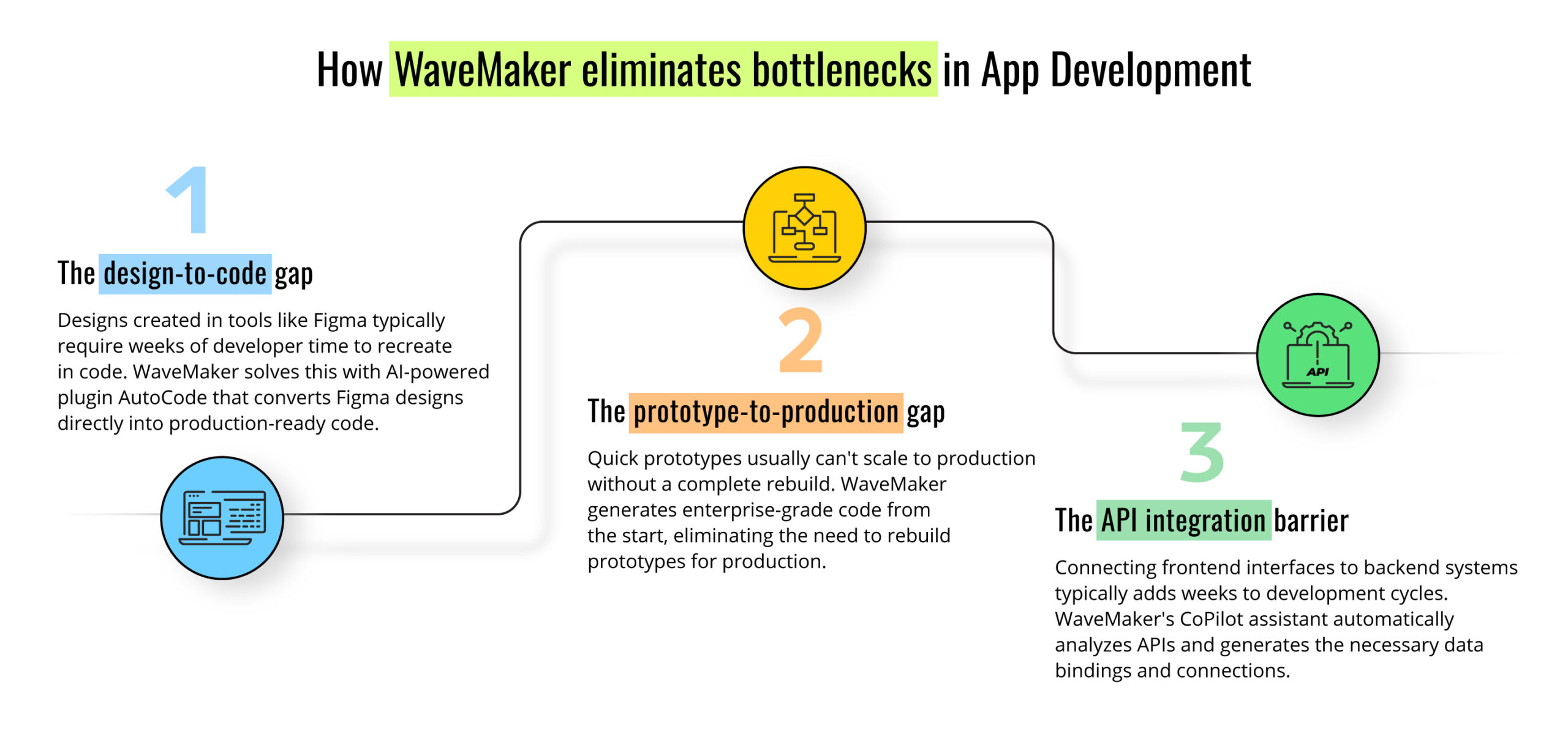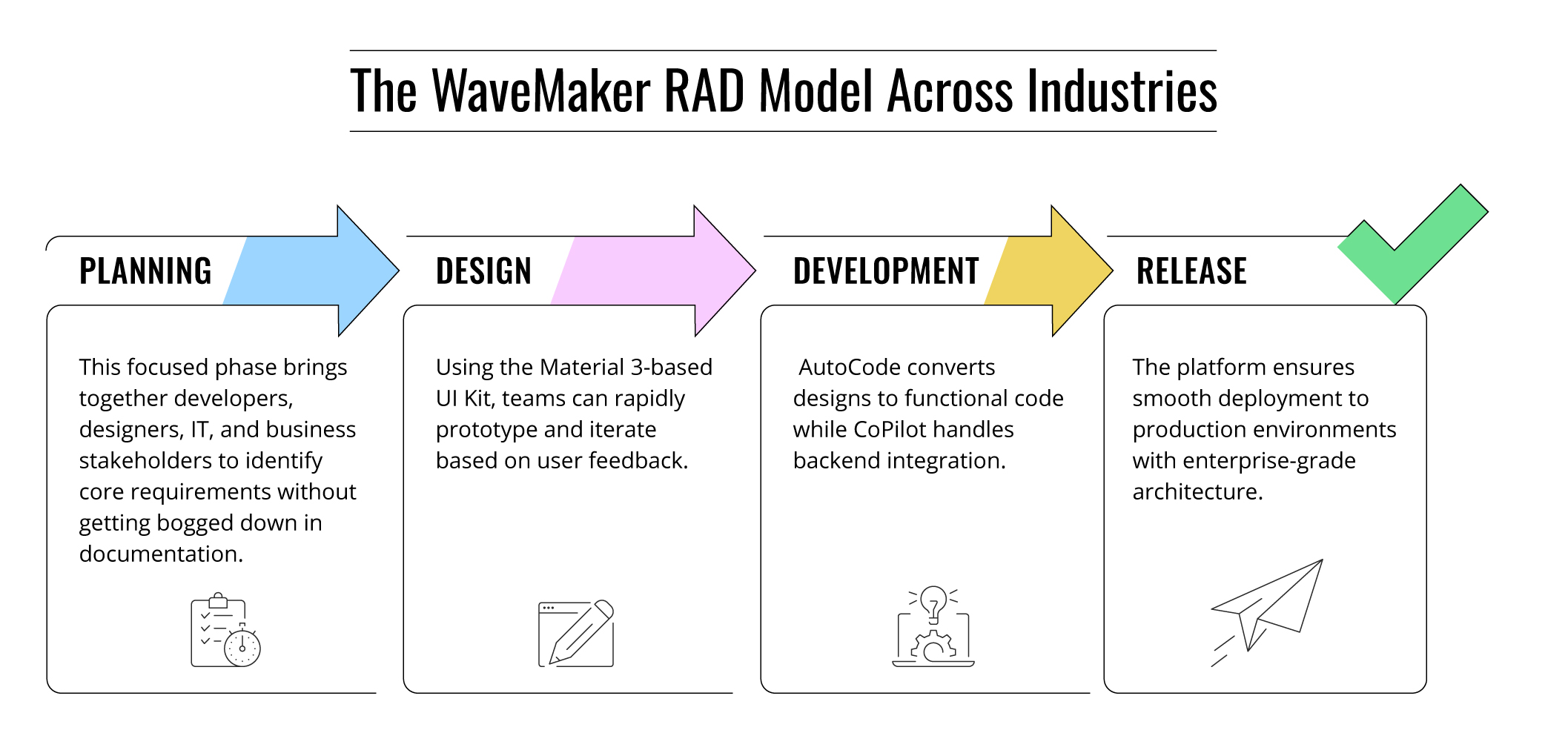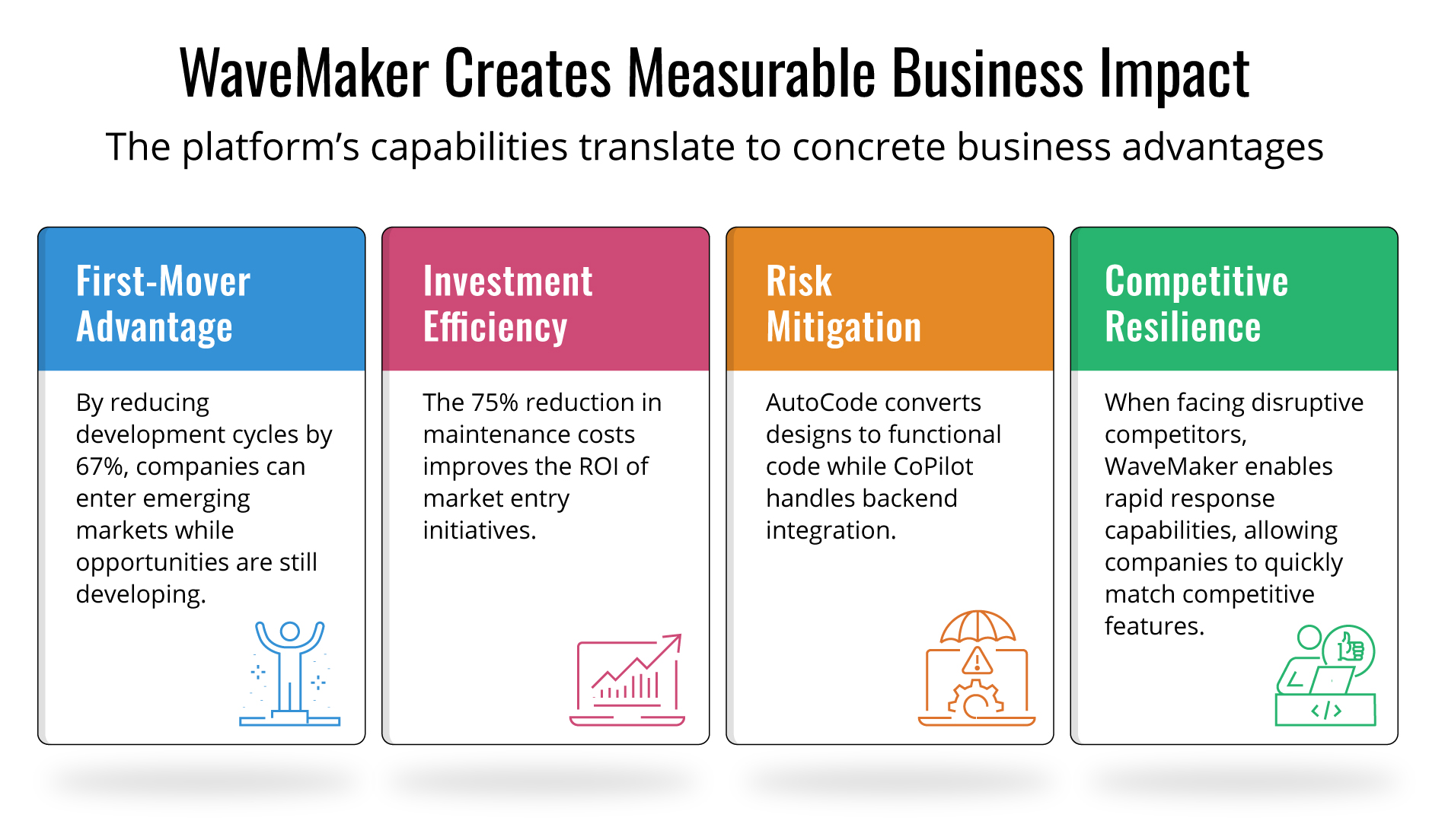WaveMaker helps product teams achieve faster results with AI tools built for Rapid Prototyping. Discover how dev teams can power through common bottlenecks of App Development.

Markets reward speed. Technology products live or die based on how quickly teams can validate ideas, adapt to feedback, and ship working solutions. WaveMaker's rapid application development platform eliminates the bottlenecks that typically delay market entry and destroy deadlines.

Traditional development cycles kill market opportunities. By the time most companies finish building their applications, market conditions have changed, competitors have moved in, or customer needs have evolved.
WaveMaker’s platform addresses this fundamental challenge by eliminating the three biggest bottlenecks in application development:
These bottlenecks slow development and fundamentally undermine the value of rapid prototyping.
When prototypes require complete rebuilding for production, organizations gain little advantage from rapid initial development.
When interfaces can’t connect to real data sources, prototypes fail to validate critical functionality.
When design implementations require extensive manual coding, initial speed quickly gives way to implementation delays.
WaveMaker’s approach centers on three interconnected technologies:
WaveMaker AutoCode converts Figma designs directly into production-ready code. Unlike simple code generators that produce static templates, AutoCode creates fully functional components that maintain design fidelity while following proper architectural patterns.
The technology works by analyzing Figma designs and identifying key components, layouts, and interaction patterns. It then generates Angular code (or React Native for mobile applications) that implements these elements according to enterprise standards. The resulting code isn’t just visually accurate—it’s structured for maintainability, scalability, and integration with backend systems.
WaveMaker’s UI Kit provides a comprehensive component library that works across both design tools (Figma) and development environments. This shared component library ensures consistency while accelerating both design and development.
Based on Material 3 design principles, the UI Kit includes everything from basic elements like buttons and inputs to complex components like multi-step forms, data visualization tools, and navigation systems. These components are implemented consistently across design and development environments, eliminating the translation problems that typically occur between them.
CoPilot handles API integration by automatically analyzing API specifications and generating appropriate UI components with data bindings. For projects without existing APIs, it can even create backend services to match application requirements.
This AI-powered assistant understands the relationship between data structures and user interface patterns, automatically recommending appropriate components for specific data types and operations. It generates the necessary code to connect frontend components with backend services, handling data transformation, validation, and state management according to best practices.
The results are compelling: 67% faster development, 75% lower maintenance costs, and 80% less coding compared to traditional methods.

WaveMaker’s four-phase Rapid Application Development model is specifically tailored to address market entry challenges across different industries:
This model transforms market entry from a high-risk proposition dependent on upfront assumptions to an iterative process that adapts based on real market feedback – essential for successfully navigating unfamiliar territory.
WaveMaker’s platform removes traditional barriers to market entry while delivering strategic business benefits:
From Tactical Obstacles to Strategic Advantages
| Traditional Barrier | WaveMaker Solution | Strategic Outcome |
|---|---|---|
| Sequential Market Approach | Parallel development with 80% less coding |
Concurrent Market Testing: Test multiple approaches simultaneously, identifying winners before full investment |
| Integration Complexity | CoPilot’s API handling and generation |
Accelerated Insights: Applications work with real data from day one, providing accurate market intelligence |
| Experience Inconsistency | Component-based approach with design system | Brand Coherence: Maintain consistent experiences across markets while allowing necessary regional adaptations |
| Resource Limitations | Minimal coding requirements through automation | Portfolio Expansion: Support multiple market initiatives with existing teams rather than hiring for each new opportunity |
| Extended Feedback Cycles | Rapid iteration capability | Learning Advantage: Adapt quickly to market surprises rather than remaining committed to incorrect assumptions |

First-Mover Advantage: By reducing development cycles by 67%, companies can enter emerging markets while opportunities are still developing. This timing advantage often determines which brands become category leaders and which remain followers.
Investment Efficiency: The 75% reduction in maintenance costs improves the ROI of market entry initiatives, allowing companies to pursue opportunities that would otherwise fall below profitability thresholds or extend their reach across more markets with the same budget.
Risk Mitigation: Rather than committing fully to market assumptions, companies can deploy functional applications to gather actual usage data, making investment decisions based on demonstrated customer behavior rather than theoretical models.
Competitive Resilience: When facing disruptive competitors, WaveMaker enables rapid response capabilities, allowing companies to quickly match competitive features while developing their own differentiators.
Organizations looking to leverage WaveMaker for market expansion should follow these steps:
WaveMaker’s RAD platform fundamentally changes what’s possible in terms of market responsiveness. By delivering on the promise of rapid prototyping without sacrificing production quality, it enables organizations to pursue opportunities that would otherwise be technically unfeasible or economically impractical.
For businesses competing in rapidly evolving markets, WaveMaker provides more than development acceleration—it delivers the ability to transform market strategy from plan-based execution to adaptive response. This capability represents a fundamental shift from treating technology as a constraint on market strategy to leveraging it as a catalyst for market expansion.